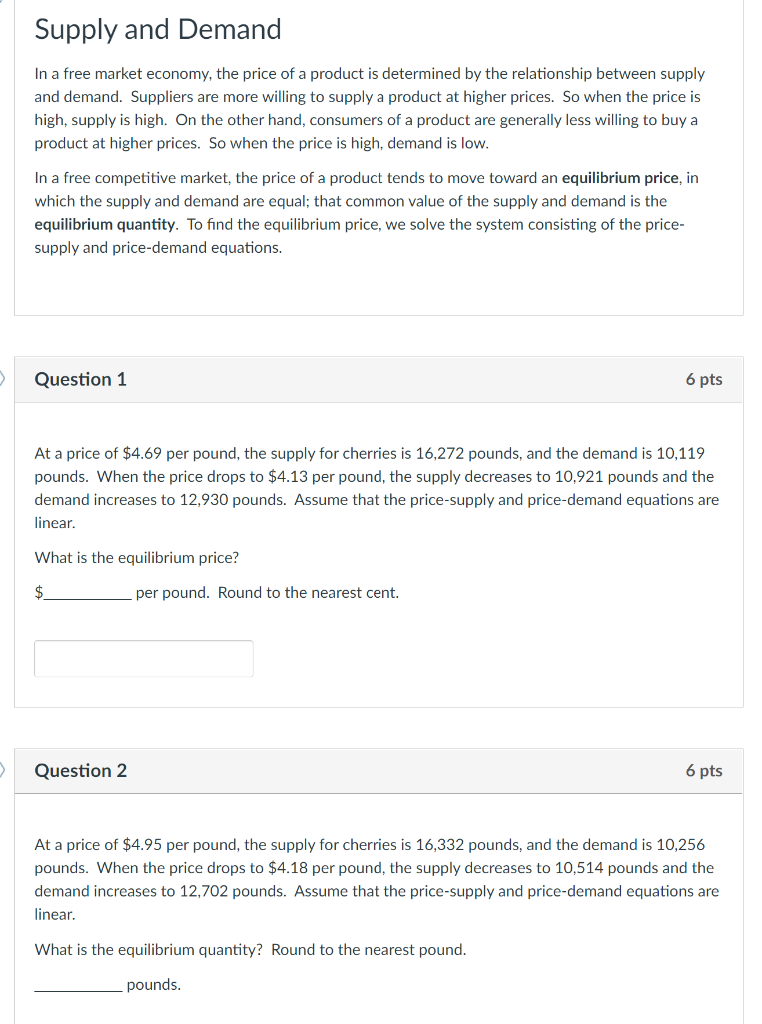
Supply and Demand In a free market economy, the price of a product is determined by the relationship between supply and demand. Suppliers are more willing to supply a product at higher prices. So when the price is high, supply is high. On the other hand, consumers of a product are generally less willing to buy a product at higher prices. So when the price is high, demand is low. In a free competitive market, the price of a product tends to move toward an equilibrium price, in which the supply and demand are equal; that common value of the supply and demand is the equilibrium quantity. To find the equilibrium price, we solve the system consisting of the price- supply and price-demand equations. Question 1 6 pts At a price of $4.69 per pound, the supply for cherries is 16,272 pounds, and the demand is 10,119 pounds. When the price drops to $4.13 per pound, the supply decreases to 10,921 pounds and the demand increases to 12,930 pounds. Assume that the price-supply and price-demand equations are linear. What is the equilibrium price? $ per pound. Round to the nearest cent. Question 2 6 pts At a price of $4.95 per pound, the supply for cherries is 16,332 pounds, and the demand is 10,256 pounds. When the price drops to $4.18 per pound, the supply decreases to 10,514 pounds and the demand increases to 12,702 pounds. Assume that the price-supply and price-demand equations are linear. What is the equilibrium quantity? Round to the nearest pound. pounds. Supply and Demand In a free market economy, the price of a product is determined by the relationship between supply and demand. Suppliers are more willing to supply a product at higher prices. So when the price is high, supply is high. On the other hand, consumers of a product are generally less willing to buy a product at higher prices. So when the price is high, demand is low. In a free competitive market, the price of a product tends to move toward an equilibrium price, in which the supply and demand are equal; that common value of the supply and demand is the equilibrium quantity. To find the equilibrium price, we solve the system consisting of the price- supply and price-demand equations. Question 1 6 pts At a price of $4.69 per pound, the supply for cherries is 16,272 pounds, and the demand is 10,119 pounds. When the price drops to $4.13 per pound, the supply decreases to 10,921 pounds and the demand increases to 12,930 pounds. Assume that the price-supply and price-demand equations are linear. What is the equilibrium price? $ per pound. Round to the nearest cent. Question 2 6 pts At a price of $4.95 per pound, the supply for cherries is 16,332 pounds, and the demand is 10,256 pounds. When the price drops to $4.18 per pound, the supply decreases to 10,514 pounds and the demand increases to 12,702 pounds. Assume that the price-supply and price-demand equations are linear. What is the equilibrium quantity? Round to the nearest pound. pounds







